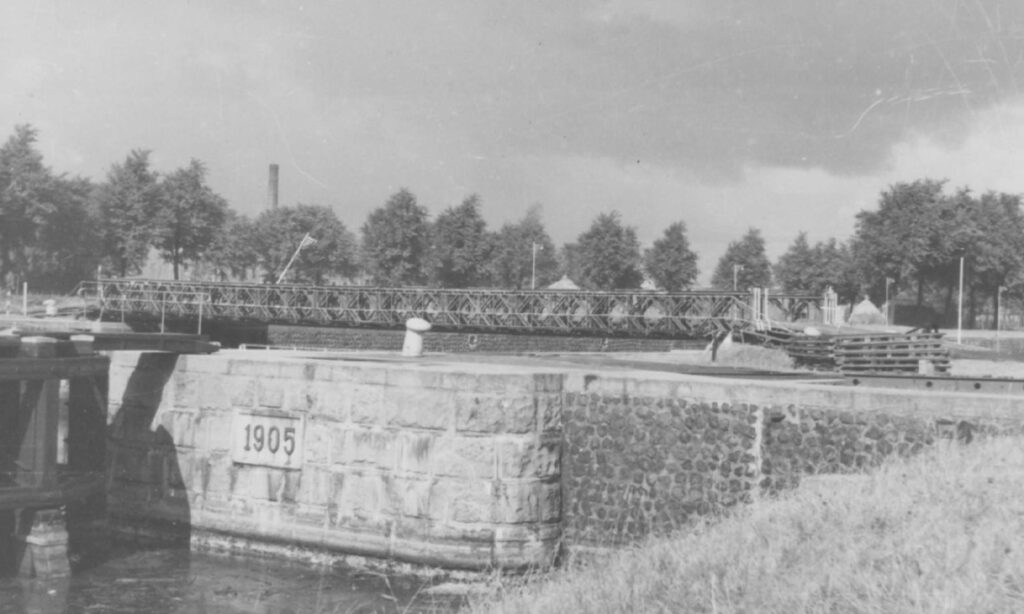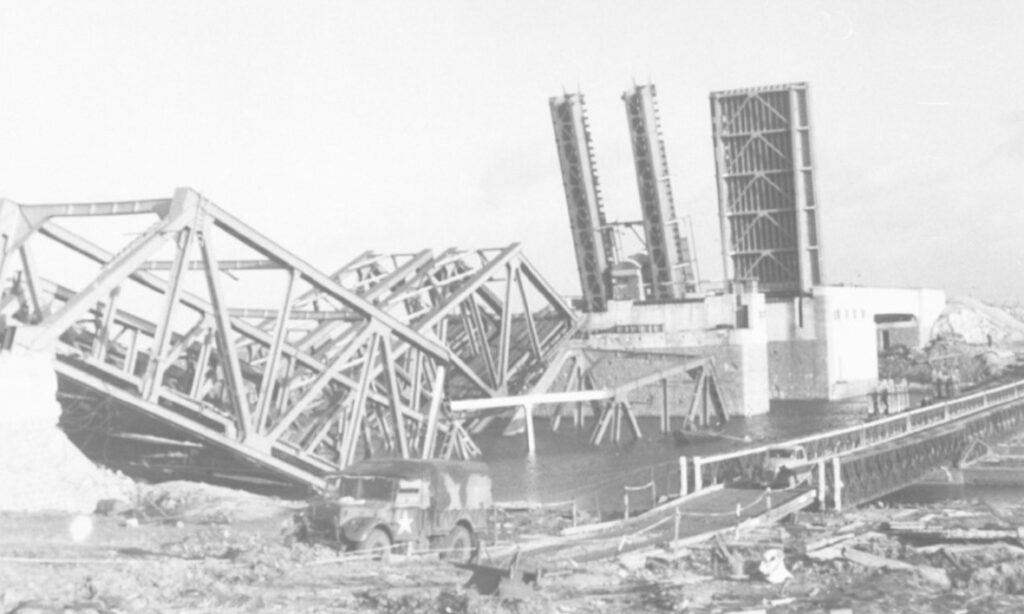No products in the cart.


The invention of the Bailey bridge
Sir Donald Coleman Bailey (1901-1985) worked as a civil engineer for the British Ministry of Defence and had a passion for bridge construction. In his spare time, he built scale models, including a design for a modular bridge. When he presented this model to his superiors, they immediately recognized its potential. The bridge was put into production and played a crucial role in the Allied advance from 1943 onwards.
A network of 3,000 bridges
During World War II, more than 3,000 Bailey bridges were built in Italy, with a total length of 90 kilometers. They replaced bridges destroyed by the Germans and enabled rapid troop movements. The longest Bailey bridge, spanning the Sangro River, measured 343 meters. The design was also mass-produced in Britain and the United States and was used in Zeeland during the liberation in 1944. Bailey was knighted for his invention.


A brilliant construction
The strength of the Bailey bridge lies in its simplicity. Thanks to its modular design, military engineers could quickly assemble and dismantle the bridge without the need for cranes or other heavy equipment. The basic structure consisted of truss segments measuring 3.05 meters in length, connected using a mortise and tenon joint. By adding segments, the bridge could be extended indefinitely, provided additional piers were installed. The maximum span without piers was 60 meters.
Variable load capacity
By placing multiple trusses side by side or on top of each other, the load capacity or span could be increased. This was indicated by the letters T (triple-truss) and S (single-story). For example, T.S. meant “three trusses side by side and one high.” At Liberty Park War Museum in Overloon, a T.T. variant is displayed: three trusses wide and three high for extra load capacity.


The Bailey Bridge at Our Museum
In May and June 2014, the 105 Engineer Company Water Construction of the 101 Engineer Battalion built the first infrastructure of the Liberation Park Zeeland. This was part of a military exercise, training, and public service initiative. A key highlight was the installation of a permanent Bailey bridge, provided by the Royal Netherlands Army Command. Today, this bridge stands as a lasting symbol of the ingenious engineering that played a vital role in the liberation of the Netherlands.

